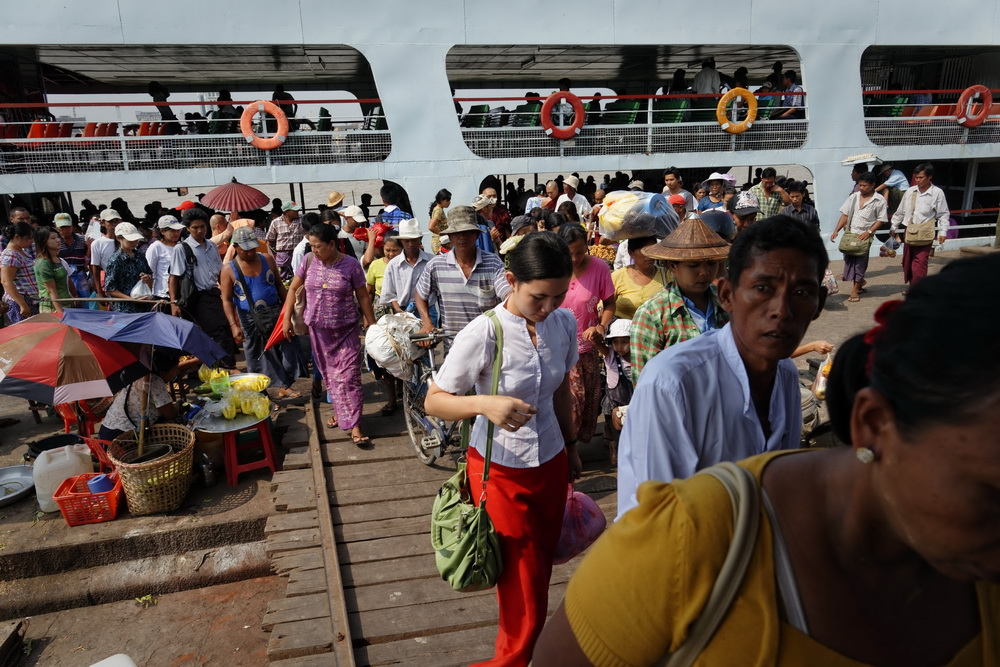In 2014, Myanmar carried out its latest Population and Housing Census, the first to be conducted in three decades. The 2014 census shows that the country had over 51.4 million inhabitants at the time of the survey. Of these, over 24.8 million were males and 26.6 million were females. 1
| Countries with the greatest demographic opportunity for development are those entering a period in which the working-age population has good health, quality education, decent employment and a lower proportion of young dependents. Smaller numbers of children per household generally lead to larger investments per child, more freedom for women to enter the formal workforce and more household savings for old age. When this happens, the national economic payoff can be substantial. This is a ‘demographic dividend.2 |
71 percent of of the population are living in rural areas and 29 percent in urban areas. According to the census data. People in the working age group 15-64 years account for 68.3 percent, while children in the age-group 0-14 years and old people over the age of 65 years account for 25.4 per cent and 6.3 per cent respectively. 3

Myanmar: A new path out of adversity. Photo by Marcel Crozet / ILO taken on April 30, 2013. (CC BY-NC-ND 2.0)
Population Density
Myanmar’s population density was calculated to be 76 people per square kilometer. According to the United Nations Statistics Division, the total area of Myanmar is 676,577 km2.4 Population density has increased in all states and regions throughout the country, and increases are most pronounced in areas of greater urbanisation. The most densely populated area, Yangon, is also the commercial capital of Myanmar.
Labor Force Participation Rate
The labor force participation rate for the people older than 15 is 67 percent, with a higher rate of men than women in the labor force, at 81.7 percent and 47.1 percent respectively. 5
Dependency ratio
The dependency ratio shows the number of dependents — aged 0-15 and over 65, relative to the total population, demonstrating the number of people of non-working age relative to working age. The Census shows that the average total dependency ratio of population in Myanmar is 53 percent. Child dependency ratio in Myanmar is 43.7 percent and aged dependency ratio is 8.8 percent, meaning that there are many more non-working people in the 0-15 age group than over 65. The total and child dependency ratios are falling in Myanmar, while the aged dependency ratio and the ageing index are increasing, meaning that the population is ageing and the number of older dependents is increasing. The ageing index, which measures the number of people over 60 per 100 people, increased from 8.8 in 1973 to 10.2 in 1983 and to 20.1 in 2014. 6
Total Fertility Rate and Life expectancy
The total fertility rate measures the average number a woman would have if the age-specific fertility rates remained the same throughout childbearing years, defined by the UN as being between 15 and 49. In the 1970s, Myanmar’s fertility rate of 6 children per woman, while the last census gives a figure of just 2.3 children per women in 2014. 7
The 2014 Myanmar Population and Housing Census shows that for every 1,000 children born in Myanmar, 62 die before reaching their first birthday. This rate is higher in rural areas than in urban areas. The under-five mortality rate is 72 at the Union level with the same pattern at both the State and Region level. Total life expectancy at birth for Myanmar is 66.8 years. 8
Literacy of Population
According to the census data, 39.9 million persons (aged 15 years and above) in Myanmar are able to read and write and over 3.55 million people who are illiterate. Literacy rate for the people older than 15 is 89.5 percent, with a higher rate of men (92.6 percent) than women (86.9). 9
References
- 1. The 2014 Myanmar Population and Housing Census Report Volume 2-B The Union Report: Occupation and Industry: https://opendevelopmentmyanmar.net/dataset/?id=the-2014-myanmar-population-and-housing-census-census-report-volume-2-b-the-union-report-occupation
- 2. United Nations Population Fund (UNPFA) http://www.unfpa.org/demographic-dividend
- 3. The 2014 Myanmar Population and Housing Census Report Volume 2-B The Union Report: Occupation and Industry: https://opendevelopmentmyanmar.net/dataset/?id=the-2014-myanmar-population-and-housing-census-census-report-volume-2-b-the-union-report-occupation
- 4. United Nations Statistics Division http://data.un.org/CountryProfile.aspx?crName=myanmar
- 5. The 2014 Myanmar Population and Housing Census Report Volume 2-B The Union Report: Occupation and Industry: https://opendevelopmentmyanmar.net/dataset/?id=the-2014-myanmar-population-and-housing-census-census-report-volume-2-b-the-union-report-occupation
- 6. The 2014 Myanmar Population and Housing Census Report Volume 2-B The Union Report: Occupation and Industry: https://opendevelopmentmyanmar.net/dataset/?id=the-2014-myanmar-population-and-housing-census-census-report-volume-2-b-the-union-report-occupation
- 7. Myanmar’s first census in more than 30 years: A radical revision of the official population count http://www.ined.fr/fichier/s_rubrique/24592/population.societies.2015.527.census.birma.en.en.pdf
- 8. Myanmar’s first census in more than 30 years: A radical revision of the official population count http://www.ined.fr/fichier/s_rubrique/24592/population.societies.2015.527.census.birma.en.en.pdf
- 9. The 2014 Myanmar Population and Housing Census Report Volume 2-B The Union Report: Occupation and Industry: https://opendevelopmentmyanmar.net/dataset/?id=the-2014-myanmar-population-and-housing-census-census-report-volume-2-b-the-union-report-occupation

